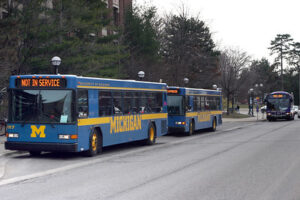A recently released report on immediate college enrollment by 2020 high school graduates shows the devastation of COVID-19. Community colleges took the biggest hit with immediate enrollment down by more than 30%. Figures from the National Student Clearinghouse Research Center shows that overall, immediate college enrollment declined by nearly 22%.
Demographically, high school graduates from low-income high schools and high schools with high minority populations were least likely to enroll in a post-secondary institution this fall. Similarly, 2020 high school graduates from high poverty high schools and urban high schools were also among those least likely to enroll in college.
Immediate college enrollment among students in all of these demographic groups dropped by more than 25%. Community colleges are built to serve these populations, so the enrollment losses here are not surprising.
This signals the need for community colleges to redouble their efforts to re-engage these “lost” students in the post-secondary education process. Vaccination offers the best possibility of bringing the COVID-19 pandemic to a close. But a “return to normal” is unlikely to recover students who could have enrolled – but did not – after their 2020 high school graduation.
The most likely outcome for these students was entry into the workforce. In some cases, these students began working to help boost their household income. In other cases, they may have missed out on essential high school counseling, or they may lack the skills or money needed to attend online classes.
While immediate college enrollment is down, the news is not all bad for community colleges. Because of their nature, community colleges serve everyone, regardless of age level. While a large proportion of community college students are recent high school graduates, an almost equal number of any given community college class are students between the ages of 25-34.
Community colleges can appeal to a broad range of students
Community colleges cannot ignore their second-largest demographic group when it comes to recruiting new students. Marketing must go beyond simply dangling the prospect of employment following graduation. Prospective students need to know that a community college will help them succeed while they are enrolled.
Seemingly inconsequential issues like childcare, transportation, food insecurity and work conflicts can prevent an older student from enrolling. Not having Internet access or competing with household members for computer time can sink a student’s educational plans. If they do not see a clear way to address their immediate needs, they will not enroll in classes.
Most college students will assume that they’ll have (or find) a job following graduation. Why else would they go to college? They need to know that they’ll be supported from the moment they enroll.
A better, more accurate and frankly more honest sales pitch would showcase the resources available to them RIGHT NOW. Those resources may help them pay for school and school-related costs. Or they may ensure that students have access to food, transportation support, mentoring, high quality academic counseling and other support services.
Finding the high school graduates who never enrolled and those older students who likely have families is a high priority. It is likely the quickest way to recover from the long-term damage wrought by COVID-19. We need a community college administration that will develop strategies to find and reach these students. We need administrators who will do the hard work to figure out how to support them.
It is not time to sit back, and it is certainly not time to divert educational resources to silly side projects.
Photo Credit: Newman University , via Flickr

























